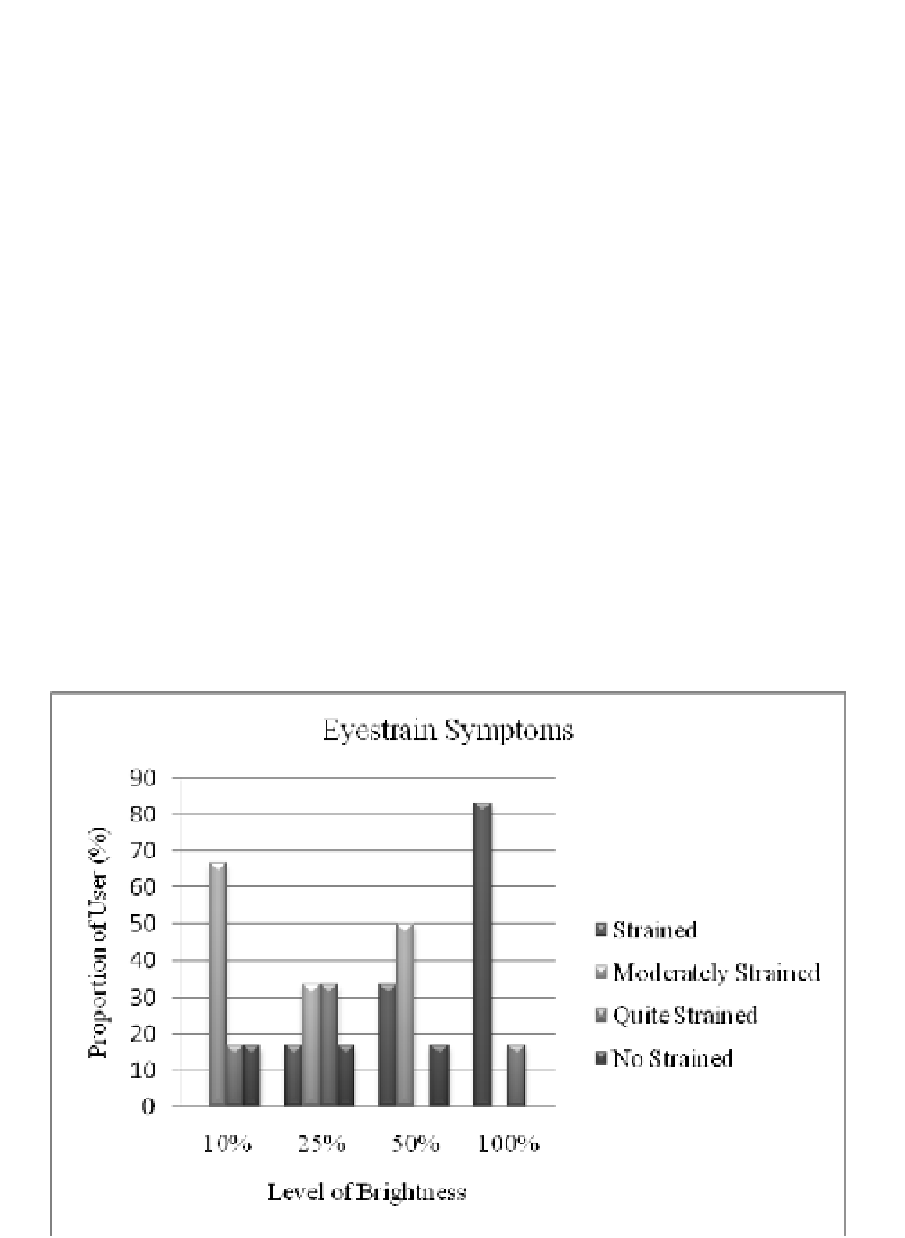Environmental Engineering Reference
In-Depth Information
to focus on a virtual object. Others types of colours also generally causes eyestrain
symptoms. Ergonomics recommendation on background colours stipulates the use of a
design that is able to reduce or minimize the incidence of visual symptoms. No strain and
no blur level is the target in the design of the background colour. Thus Red, Fuchsia, Dark
Sky Blue, Medium Slate Blue and White colours must be changed to a smoother and softer
colour type that can alleviate visual symptoms incidence.
4.2 Analysis of the virtual lighting level
Results of statistical binomial test in Table 2 demonstrated the effect of brightness level of
the virtual light on the occurrence of visual symptoms incidence. The level of brightness
affects the eyes when tracking virtual objects in the VE. A darker light level (10%) or higher
bright level (100%) can induce eyestrain and dry and irritated eyes symptoms as well as
light sensitivity symptom. This is because the eyes are forced to focus causing strain to the
eyes as well as dryness and irritation and decrease the sensitivity to light. Fig.3 (a), (b) and
(c) describes the level of symptoms occurring in the human visual system. No effect (no
strained, no dry, no glare) is the best condition of virtual lighting to be considered as one of
the attributes in designing a VE.
4.3 Analysis of the effect Field of View (FOV)
Table 3 is the result of statistical binomial test of the effect of field of view (FOV) on users. It
shows that the degree of visual field can develop incidence of visual disorder especially
eyestrain, blurred vision and dry and irritated eyes. Therefore the degree of FOV has to be
taken into account when designing a VE. It can be seen that 120
0
of FOV causes 50% of the
users to suffer eyestrain symptoms as compared to the 85
0
of FOV. On the other hand, dry
(a)

